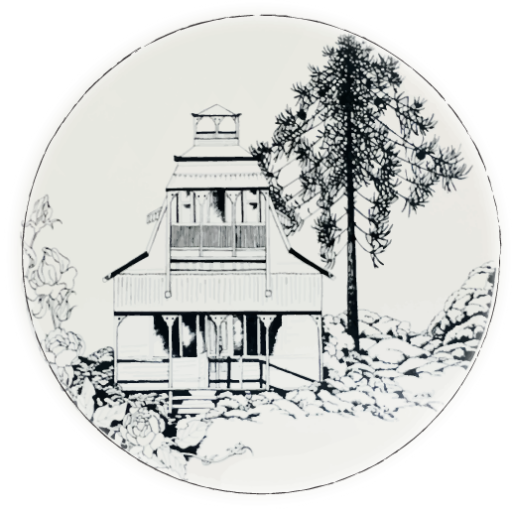Montville Place Names – George Carpenter Place
The Story Behind the Name George Carpenter Place
A recent resident to Montville, on learning about our Ecumenical Dawn Easter Service at George Carpenter Place, asked; “Where’s that and who is George Carpenter?”
It made the MHG realise that there are so many stories encapsulated in our place names.
The story behind George Carpenter Place, therefore, is the first story in a series that captures the history of many of Montville’s Place Names. George Carpenter Place is located opposite Razorback House and beside the parking area that ends at Razorback Lookout.

Plaque for Lieutenant Colonel George Carpenter, Salvationist
George Carpenter
George Carpenter was born in Melbourne in 1908. He moved to London with his parents in 1911 and completed his education there. He was an Associate of the Royal College of Art and became the first Edwin Austin Abbey Scholar for Mural Painting in 1927.
He joined the Salvation Army in 1936 and served in the United Kingdom, Germany and Holland before returning to Australia. His mission with the Salvation Army included 5 years of ‘youth work’; becoming a Foundation Member and first President of The Child and Family Welfare Council of Australia.
In 1959, George and his wife, Olive, purchased a half acre block on the Razorback Road east of the Montville Village Hall from the Salvation Army which had built ‘barracks’ there in 1897. These barracks became the first Church for the new Razorback Settlement and the Anglican and Methodist congregations also held their early services there until it was destroyed in a cyclone in 1903, Church services were then transferred later that year to the new Montville School of Arts Hall (now the Montville Village Hall). The land owned by the Salvation Army had remained vacant for years.
Lieutenant – Colonel George Raymond Carpenter became a renowned lecturer for the Salvation Army, conducting lecture tours across Europe, Asia, New Zealand, Papua New Guinea and Australia. At the same time, he and his wife, Olive, took up permanent residence in Montville in 1976, and immediately committed to their new community. In 1977, he proposed the first Ecumenical Carols by Candlelight Christmas Celebration. That event will celebrate its 50th birthday at Christmas. (2024) Then in 1978, he organized the first Ecumenical Dawn Easter Service at Razorback Lookout: its 40th birthday is this Easter (2018).
Community Service
George also joined the Montville Progress Association in 1977, becoming its President from 1981 to 1984. Under his leadership, the Association saw the preservation of the Village Green and the restoration of the Montville Village Hall and the St. Mary’s Community Hall. In many ways, George Carpenter set a trend for retiring professionals to seek out the sense of community offered by village life and commit to supporting the community that they had adopted.
The Razorback Lookout still exists although it is sorely in need of some restoration. However, the naming of the area opposite Razorback House that hosts our Easter Dawn service, George Carpenter Place, is a most fitting recognition and acknowledgement of his contribution to our community, the community of Montville.
by MHG from interview notes compiled by Stephanie McLennan.

 ©2016 Montville History Group. All rights reserved.
©2016 Montville History Group. All rights reserved.